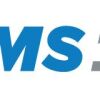Kevin Schulz, the assistant medicine director for the Houston Fire Department and Kevin Sirmons, the medical officer for NDMS/MN-1 DMAT, offered disaster response lessons learned from their experiences operating a 10,000-plus person emergency shelter at the George R. Brown Convention Center (GRBCC) in downtown Houston after Hurricane Harvey.
From their presentation at the 2018 National Association of EMS Physicians Annual Meeting, they offered the following lessons learned -- 5 Rs of disaster response for emergency shelter operations.
Regroup and Reframe
Disasters create a state in which information evolves by the hour. As such, it is critical to regroup on a daily basis, if not more often, so that everyone is on the same page across the various shifts and organizations working in tandem.
The DMAT saw 260 patients within the first 12 hours of being operational, and another 300 the following day shift. Even though high patient volume tapered with time, being flexible was an absolute necessity for smooth operations.
Reorganize and Redistribute
The influx of wanted (and sometimes unwanted) supplies and materials will require attention. In other cases, resources will be made available and actions must be taken to ensure they can be appropriately utilized.
As Houston is home to the Texas Medical Center, the largest medical complex in the world, volunteers from a number of affiliated healthcare facilities came to the shelter to offer their services. A few of the larger hospitals granted full immunity and liability coverage to their employees that were volunteering in the shelter.
By expanding the on-site healthcare resources available to patients, the shelter was able to continue to focus on one of its primary aims, protecting the hospitals from any inappropriate influx of patients from the convention center shelter.
Redesign
Every disaster is unique, thus the flow of supplies, resources and patients must be adjusted accordingly. In the case of the convention center, it was immediately obvious that zero tolerance was needed for any patient causing a disruption. This included patients with the same complaint within a 24-hour period as well as patients that overdosed on synthetic marijuana.
A unique public-private partnership was also quickly created when Uber and Lyft built a geofence around the convention center. This made trips booked from the area free, helping ease the transportation burden created by the shelter.




